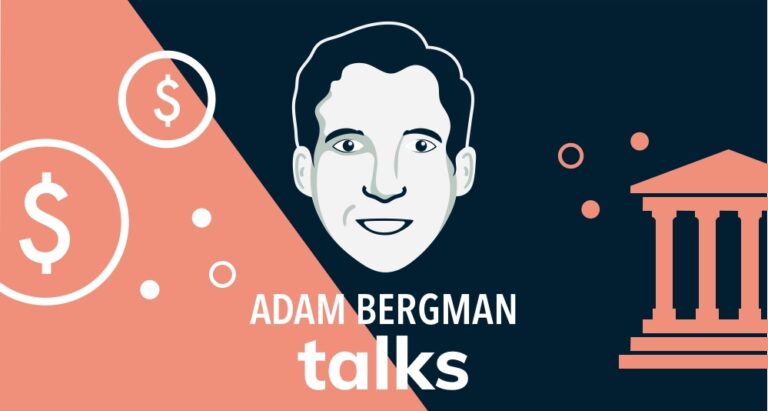IRA Financial’s Adam Bergman discusses your options with an old 401(k) plan when you leave a job.
So, what happens to your old 401(k) when you leave your job? Do you have to keep it there? Can you bring it with you to a new job? What about rollover options? In his latest podcast, Mr. Bergman discusses all the options you have with an old 401(k) and what your best plan of action should be.
Types of 401(k) Contributions
The first thing you should know about old 401(k) plans is that they’re portable. You don’t have to keep them with your old employer. All your contributions to the plan are vested immediately. You can pull that money out once there is a triggering event. In this instance, the triggering event is you parting ways with your current employer. However, if your employer makes contributions to your 401(k), generally known as as employer match, there may be a vesting schedule. The money must remain in the plan until it’s fully vested. It could be six months to a year or even three years or more. All plans and companies have different vesting schedules. Essentially, the vesting schedule is there to ensure employees don’t leave the company prematurely. No employer wants to take the time to hire and train someone, only to see them leave in a couple of months.
Another type of plan is the Safe Harbor 401(k). This is when the employer chooses to contribute to each employee a certain percentage of their salary. These work just like employee contributions and are generally vested immediately. As opposed to the above mentioned employer profit sharing contributions that may take time to vest. Always talk to your plan administrator to know exactly how much you have vested and how long until anything else (if any) becomes vested, and therefore portable.
Where Can You Take Your Old 401(k)
Before we get into that, I want to mention that even if you are completely vested, there may still be a waiting period to withdraw your funds. Some plans may make you wait up to 12 months before moving your money out of your old 401(k). Generally, if there is a waiting period, it’s no more than 30 or 60 days. However, I have seen cases where it’s been a full year.
Once the dust has settled and you are now able to move your 401(k) funds, here are your main options:
New 401(k) Plan
If you are switching jobs and your new employer offers a 401(k) plan AND allows for a rollover, you may transfer your funds to the new plan. For example, you worked for Google and leave there to go work for Apple. If Apple allows it, you can rollover the funds from your Google plan to Apple’s plan. Since you’re moving funds from one retirement plan to another, the rollover is tax-free. You don’t need to pay any taxes with a 401(k) to 401(k) rollover.
IRA Plan
The next option is to roll over your old 401(k) funds to an Individual Retirement Account, or IRA. This can be an IRA you already have or one you open up and fund it with your rollover. Again, since you are moving the funds to another retirement plan, there are no tax consequences.
Solo 401(k)/SEP or SIMPLE IRA
You may have left your job to go into business for yourself. You have several options to choose from, depending on what type of self-employment you have. If you start your own business and hire full-time employees, you may opt for a SEP IRA or SIMPLE IRA. They’re both easy to set-up and low cost retirement plan options. If you decide to start your own business and have no full-time employees (other than a spouse or partner), you may choose a Solo 401(k), which is arguably the best plan for the self-employed. Further, you can utilize one if you have any type of self-employment income (i.e. you work for Uber on the weekends).
Distribution
Your last, main option is to take a distribution from the account. For example, if you were laid off and need extra cash to live off until you find a new job, you can utilize the funds in your old 401(k). Keep in mind that your employer must withhold 20% for taxes. If your 401(k) is worth $20,000, $4,000 will be sent to the IRS for tax purposes. Further, if you are under age 59 1/2, you will get hit with a 10% early withdrawal penalty. It’s a steep price to pay and should only be done as a last resort.
What is the Best Choice for Your Old 401(k)
Let me first tell you what the worst choice is – withdrawing the funds. Unless you absolutely have no other choice, you should never withdraw money from your 401(k) before retirement. The IRS has made the penalties large enough that you should be dissuaded from taking retirement money early. Of course, your situation may be dire and you have no other choice. One thing you should consider first, is taking out a loan. When you start a new job and are allowed to bring your old 401(k) funds with you, you may be able to borrow them. You won’t be taxed or penalized, and all interest from the loan gets paid back into the plan.
As for what the best option is, that depends on your specific situation. Generally, unless that old plan is perfect, it’s best not to leave your funds there. If you did that with every job change you have throughout your career, you will end up with plans all over the place. It’s best to consolidate them to one or two plans.
In my opinion, a plan that you totally control is better than one you can’t. If you have a workplace plan, you only have a limited number of options of what you can invest in. With an IRA or Solo 401(k) plan (if self-employed), you make all the investment decisions. Further, if you self-direct your plan, a whole new world of choices open up to you – alternative investments. You can choose to invest your retirement funds in real estate, a business and even cryptocurrencies.
Conclusion
There’s almost $400 billion moving from old 401(k) and similar plans every year. You are not alone when deciding what to do with all that retirement money. It’s best to speak to a professional when deciding which path is best for you.
If you have any questions about what to do with your old 401(k), please contact us @ 800.472.1043. Thanks for listening and be sure to check out all my old podcasts on SoundCloud!













